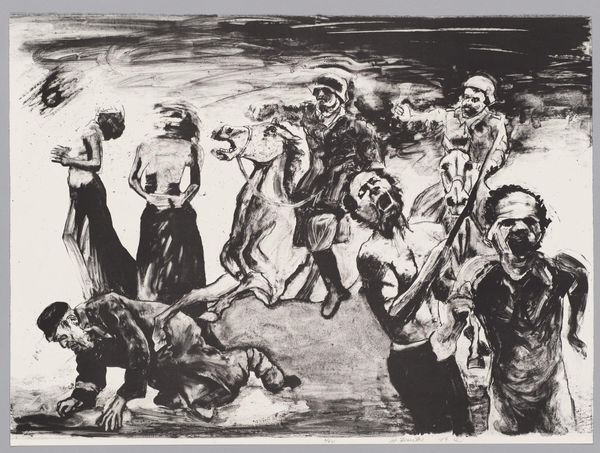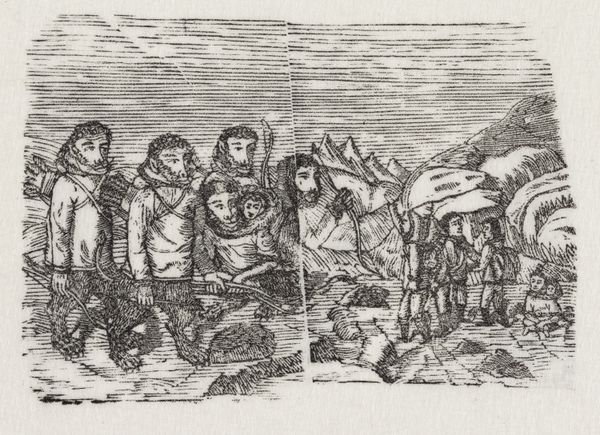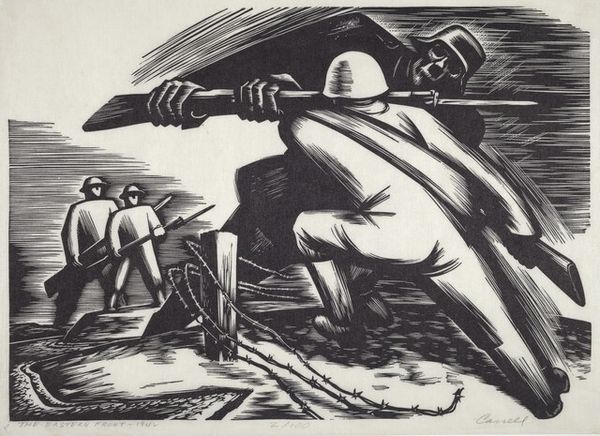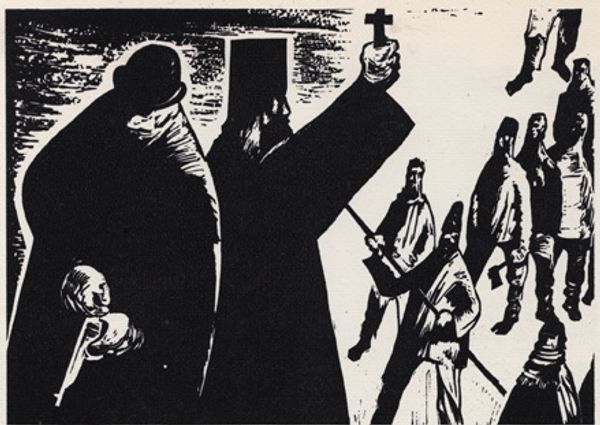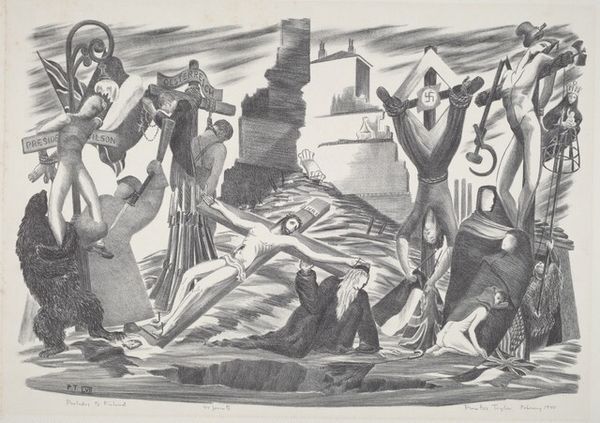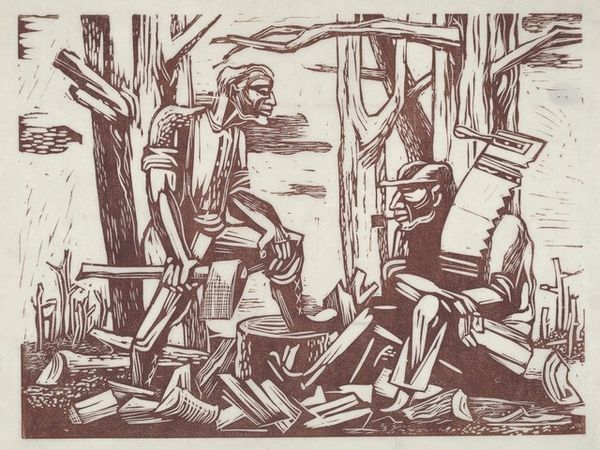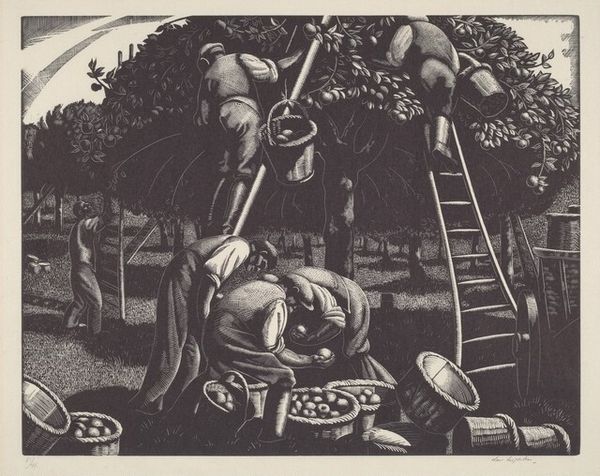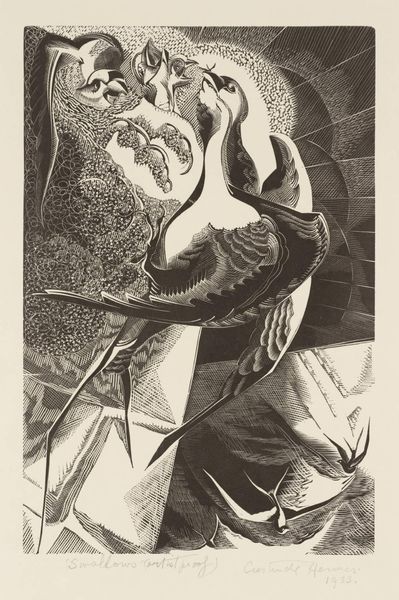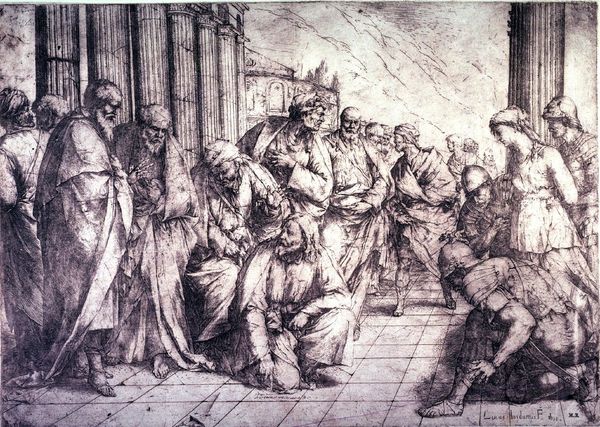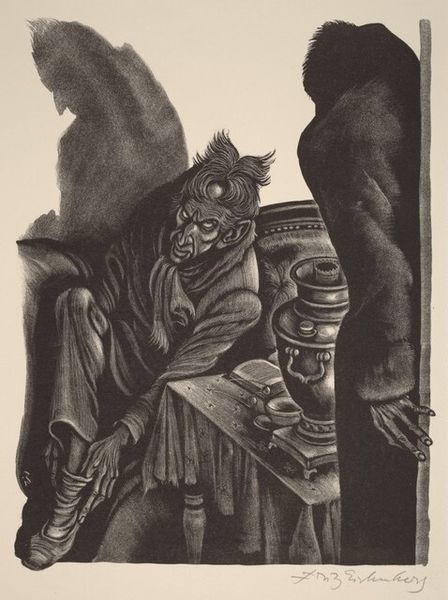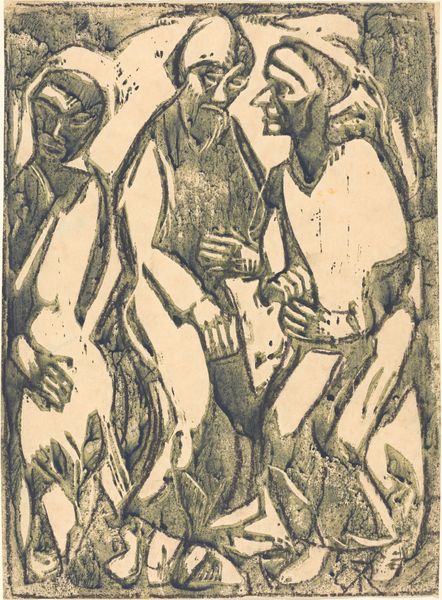
Dimensions: Image: 228 x 305 mm Sheet: 285 x 443 mm
Copyright: National Gallery of Art: CC0 1.0
Curator: This powerful woodcut, titled "Mine Accident," was created by Anton Refregier sometime between 1935 and 1943. The stark contrasts and strong figuration evoke immediate feelings of tragedy and social commentary. What are your initial thoughts on this print? Editor: The heavy lines and the sheer weight of the black ink really convey a sense of somber dread. Look at the faces of these figures – a group of women and a child – etched with grief. It's raw and immediate, speaking volumes about the hardship embedded in industrial labor. Curator: Indeed. Refregier, known for his social realism, used the woodcut medium to its full potential. The medium itself lends an air of severity that supports the piece's content, enhancing the expressions of loss and the grim industrial backdrop. The faces—distorted yet deeply human—reflect the impact of a system failing its workers, touching upon issues of gender, class and marginalization. Editor: Right, and consider the social and economic context here. Woodcuts are relatively inexpensive and accessible. In a time of widespread economic hardship, Refregier uses this "democratic" medium to directly engage with the working class and illustrate their realities and collective trauma, amplifying the political significance through readily available materials and techniques. Curator: I agree. Refregier creates a critical statement that engages with social issues, drawing upon themes prevalent in German Expressionism, yet grounding it within a specific social context of American labor. The landscape of industrial chimneys looms menacingly in the background, dwarfing the human figures and accentuating their vulnerability within this industrialized landscape. It encourages a viewing experience beyond art and emphasizes our society. Editor: Absolutely. This print isn't just a depiction; it’s a document. By looking closely at Refregier's technical and material choices—the printmaking itself—we can gain insight into his intended audience and his larger project to elevate discussions around labor, risk, and accountability during a difficult historical period. We come away not just with an image, but an understanding of its making and its message, still disturbingly resonant today.
Comments
No comments
Be the first to comment and join the conversation on the ultimate creative platform.
